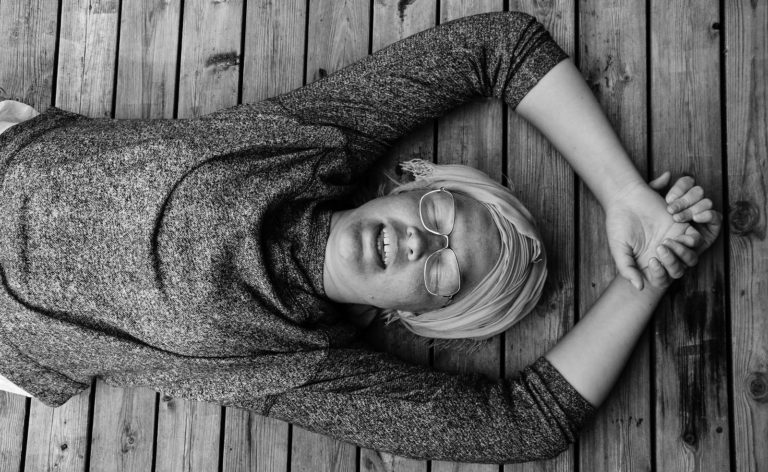
Image by Peter Karlsson/Flickr, Attribution.
What’s Asleep Inside of Us
The idea of “having faith” in someone or something — to trust a person, to believe in a particular idea or feeling, to live according to a certain religion or ideology — is often tied to stories, to assumptions, to specific and pre-determined ideas of what faith should be.
Though we may know the conventional meaning of the word “faith,” I wonder how much we consider what the feeling of faith really is at all. In Pali — the language of the original Buddhist texts — the word for “faith” is saddha. At its most literal level, saddha is translated as “to place the heart upon.” If and when we place our hearts upon something, we are letting go, opening our fist, and releasing our grip.
That letting go isn’t easy, though. Our culture puts a premium on control, valuing self-discipline, hard work, and competition — literal and metaphorical white-knuckling in all facets of our lives. We are more likely to associate clenched fists with strength than the ability to rest, which is actually quite difficult. To have faith requires a deep intellectual, emotional, and intuitive understanding that the heart is innately capable of loving, trusting, and letting go. With faith, we can “know” with all of our being, not just our minds.
When I encountered Joseph Goldstein at my first meditation retreat in the 1970s, I did not know he was eventually going to be one of my closest friends. Not because of anything Joseph did or didn’t do when we met, but because I was in my own state of frustration at the particular moment we crossed paths for the first time.
My first experience with meditation happened on a ten-day retreat in India, and my initial impressions were less than pleasant. I came to meditation with a very focused desire to find myself and somehow leave behind years of personal suffering for “enlightenment.” But I was surprised to realize that the practice of meditation gave me space to see the inner workings of my mind, from which much of my suffering emerged. The beginning chapters of my practice were overwhelmed by disappointment and confusion — and, most notably, excruciating knee pain!
At some point during the retreat, I found a way to save my knees from suffering so much. For each meditation sitting, I’d go to the hall quite early so I could lean against the bookcases. Doing so totally rescued me from having to deal with distracting body pain as I also began to notice other, more subtle activities of my mind in action. One day, as I was getting up from a sitting, I happened to look at the plaque on the bookcase:
“This bookcase was donated by Joseph Goldstein.”
I didn’t know who Joseph was at the time, but I had come to rely on this bookcase. Jokingly, I thought to myself, “Joseph Goldstein saved my life.”
The day I finally met Joseph, I was coming from a sitting during which I found myself thinking, “If your mind wanders one more time, you should just bang your head against the wall.” Luckily, the lunch bell rang and the group made our way to the dining hall. Still feeling the residue of self-judgment, fear, and anger about my apparent inability to experience immediate nirvana, I overheard someone ask a man in the lunch line, “How was your morning?”
The man calmly answered:
“It was difficult. I couldn’t concentrate at all, but it’ll probably be different this afternoon.”
The man’s answer annoyed me; I couldn’t understand how he had such a calm attitude. Nor did I understand the more fundamental wisdom behind his calmness and acceptance — that there is nothing wrong with the wandering of the mind, and that noticing such activity is the nature of the practice. I was too caught up in thinking meditation should look a certain way.
Later in the retreat, I finally met this man officially, and he turned out to be Joseph Goldstein. It was only then that I could express my gratitude for his “saving my life” with the bookcases. It was only later that I understood that my grasping, angry attitude wasn’t a sign of being a “good meditator,” but a byproduct of deep self-criticism. I also learned to understand that Joseph’s attitude was not blasé, but based in a real, expansive, and sustainable feeling of faith.
There is a great difference between self-preoccupation and love. At the time of my first retreat, I thought of my self-discipline as a form of self-care. In fact, I was positioning myself in a rigid mental chamber. Joseph’s wisdom scared me. His answer challenged the story I had been convincing myself to believe — that becoming lazy is a necessary result of self-acceptance, which is a story that was keeping me in a state of frustration and self-blame.
Faith may be asleep within each of us, but we can choose whether or not to wake ourselves up. Faith is an awakening, a simple recognition that we are able to move toward compassion, love, and connection, and away from judgment, fear, and isolation.
When we talk about balance or “the middle way,” the goal isn’t to find some kind of average between self-indulgence and self-mortification, to punish our pleasure, or reward ourselves for our punishment. The middle way emerges from “resting the heart upon” acceptance of the tension, stress, and general discomfort associated with these extremes. With that acceptance, we move to a place of real balance, and when we make that movement, we are propelling ourselves forward into the unknown with faith.

Share your reflection